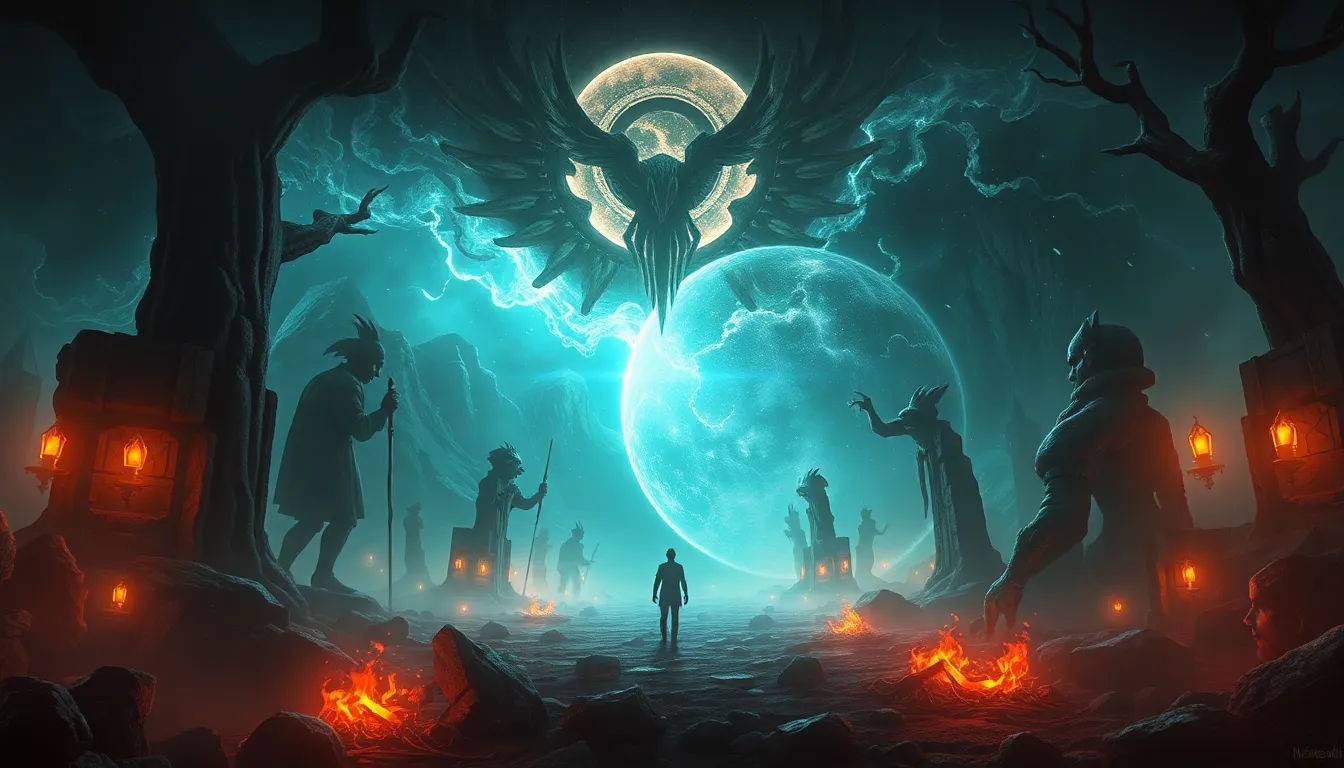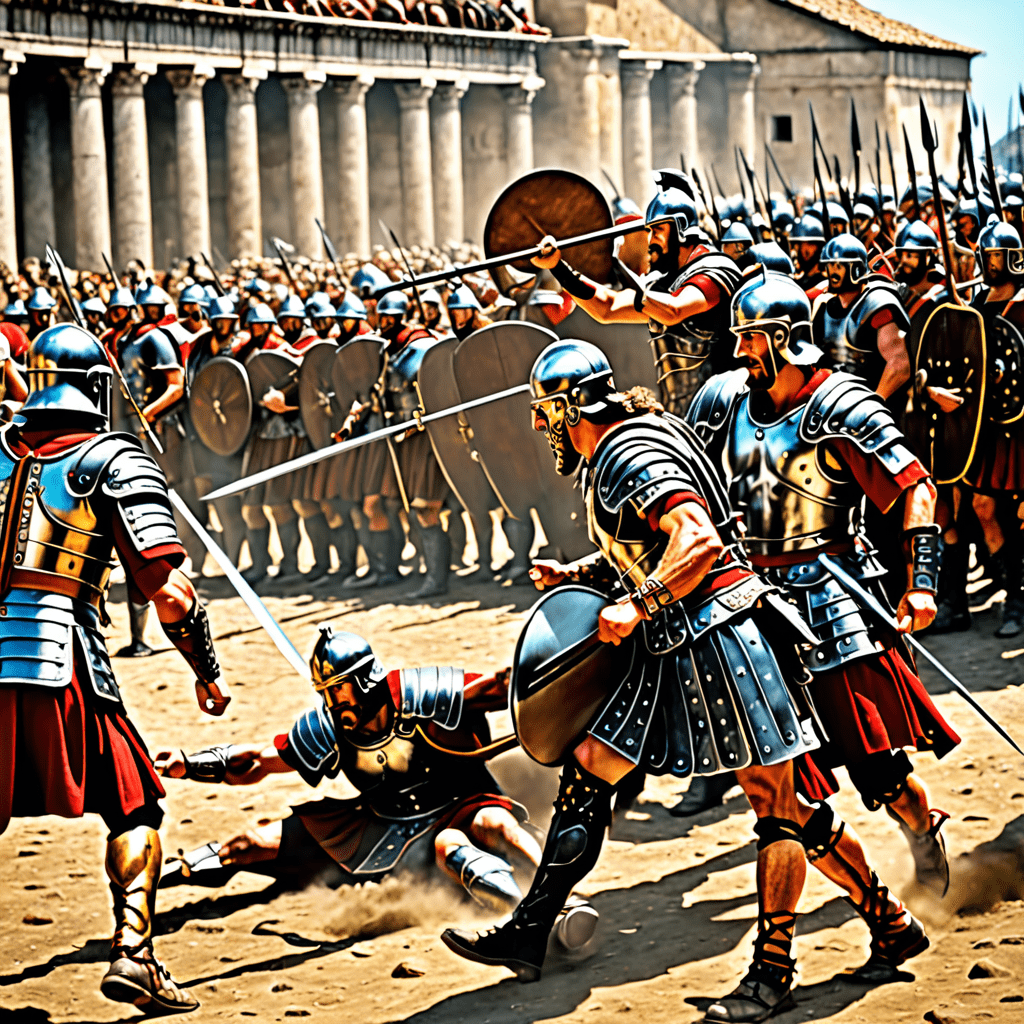Underworld Legends: The Myths That Shape Our Fate
I. Introduction to Underworld Myths
The concept of the underworld has intrigued humanity for centuries, manifesting in various mythologies across cultures. At its core, the underworld refers to a realm that exists beneath the surface of the earth, often associated with death and the afterlife. These myths serve a dual purpose: they explain the mysteries of life and death while also reflecting cultural values and beliefs.
Myths play a crucial role in shaping cultural perspectives, providing frameworks through which societies understand their existence. They influence art, literature, and even personal beliefs about fate and destiny. This article will explore the underworld myths and their profound implications on our understanding of fate and how these ancient narratives continue to resonate in contemporary society.
II. The Concept of the Underworld Across Cultures
Different cultures have their unique interpretations of the underworld, often depicting it as a complex realm where the soul undergoes various trials and judgments. Below are some prominent examples:
A. Ancient Greek Underworld: Hades and its significance
In Greek mythology, the underworld is known as Hades, named after its ruler. Hades is not merely a place of punishment; it also contains Elysium, where the virtuous reside after death. This duality emphasizes the Greeks’ belief in justice, where one’s actions in life directly influence their fate in the afterlife.
B. Egyptian Duat: The journey of the soul and judgment
The Duat, or the Egyptian underworld, is a realm that the soul must navigate after death. It is here that the heart of the deceased is weighed against the feather of Ma’at, the goddess of truth and justice. If the heart is lighter, the soul is granted passage to the afterlife; if heavier, it faces annihilation. This myth highlights the Egyptians’ focus on moral integrity and the consequences of one’s life choices.
C. Norse Hel: The realm of the dead and its implications
Norse mythology presents Hel, a cold and dark realm ruled by the goddess Hel. Unlike the Greek and Egyptian views, the Norse underworld does not discriminate based on one’s morality; all souls, regardless of their life actions, end up in Hel if they do not die in battle. This perspective reflects the Norse understanding of fate as a predetermined path, where every individual meets their end in the same way.
III. Key Figures in Underworld Myths
Central to these myths are key figures who embody the themes of death, judgment, and rebirth. Here are a few notable characters:
A. Charon: The ferryman of souls
In Greek mythology, Charon is the ferryman who transports souls across the river Styx to the underworld. He demands a coin as payment, emphasizing the ancient belief that proper burial rites are essential for safe passage after death.
B. Persephone: The duality of life and death
Persephone, the daughter of Demeter, plays a crucial role in Greek mythology as the queen of the underworld. Her abduction by Hades symbolizes the seasonal cycle of life and death. Her return to the surface during spring represents rebirth, illustrating the interconnectedness of life and death.
C. Osiris: The resurrection and renewal themes
In Egyptian mythology, Osiris is the god of the afterlife and resurrection. After being murdered and dismembered by his brother Set, Osiris is resurrected by his wife, Isis. This myth embodies themes of renewal and the cyclical nature of existence, influencing the Egyptians’ views on life after death.
IV. Myths of Creation and Destruction
Underworld myths often intertwine with creation and destruction narratives, emphasizing the cyclical nature of existence.
A. The role of the Underworld in creation myths
In many cultures, the underworld is seen as the source of life. For example, in some Native American traditions, the underworld is where the first humans emerged, signifying the idea that life springs from death.
B. Destruction myths: The cyclical nature of existence
Destruction myths often depict the end of one cycle leading to the birth of another. The ancient Mesopotamian myth of the flood illustrates this concept, where destruction precedes renewal, reinforcing the belief that endings are necessary for new beginnings.
C. Influence of these myths on societal values
These creation and destruction myths influence societal values, encouraging communities to embrace cycles of change and to find meaning in both life and death.
V. Fate and Free Will in Underworld Narratives
The tension between fate and free will is a recurring theme in underworld narratives, prompting contemplation of human agency.
A. The interplay between destiny and choice
Many myths illustrate the struggle between destiny and individual choice. For instance, in Greek tragedies, characters often face dire consequences due to their choices, raising questions about the extent of their free will.
B. Examples from Greek tragedies and their moral lessons
In plays like Oedipus Rex, the protagonist’s attempts to escape his fate ultimately lead him to fulfill it, highlighting the inescapability of destiny. Such narratives serve as moral lessons about the limitations of human agency.
C. Modern interpretations of fate in literature and film
Contemporary literature and films often revisit these themes, exploring how characters navigate their destinies in worlds shaped by underworld myths. The ongoing popularity of these narratives reflects humanity’s enduring fascination with fate and choice.
VI. The Underworld as a Reflection of Human Experience
The underworld serves as a metaphorical landscape that reflects human experiences related to death, grief, and the quest for legacy.
A. Fear of death and the unknown
Humanity’s fear of death often manifests in myths, where the underworld represents the ultimate unknown. These narratives provide a framework for understanding mortality and the mysteries that lie beyond life.
B. The quest for immortality and legacy
Many myths explore the desire for immortality, with characters seeking to leave behind a lasting legacy. This quest is evident in the stories of heroes who undertake epic journeys, striving for eternal remembrance.
C. Grief and loss: Cultural rituals surrounding death
Cultural rituals surrounding death often draw from underworld myths, providing communities with means to process grief and honor the deceased. These rituals help individuals navigate loss and find solace in shared beliefs.
VII. Underworld Legends in Contemporary Culture
Underworld myths have found renewed expression in contemporary culture, influencing various forms of art and media.
A. Adaptations in literature: From Dante to modern fantasy
Literary adaptations, such as Dante Alighieri’s Inferno, reimagine the underworld, influencing modern fantasy narratives that draw on these rich mythological themes.
B. The influence of Underworld myths in movies and video games
Movies and video games frequently incorporate underworld narratives, allowing audiences to explore themes of death and morality interactively. Titles like God of War and Hades illustrate the enduring appeal of these myths.
C. The resurgence of interest in mythological themes
The resurgence of interest in mythology, particularly among younger generations, reflects a desire to reconnect with ancient narratives that explore fundamental human questions.
VIII. Psychological Implications of Underworld Myths
Underworld myths also hold significant psychological implications, providing insight into the human psyche.
A. Archetypes and their significance in the human psyche
Archetypes from underworld myths, such as the hero’s journey, resonate deeply within the human experience. They offer frameworks for understanding personal struggles and triumphs.
B. The role of myth in coping with mortality
Myths can serve as coping mechanisms for individuals grappling with mortality, providing narratives that help make sense of life’s transient nature.
C. Therapeutic uses of myth in modern psychology
Therapeutic practices often incorporate mythological narratives to facilitate healing, allowing individuals to explore their fears and desires through the lens of these timeless stories.
IX. The Future of Underworld Legends
The future of underworld legends is likely to evolve as cultures interact and reinterpret these ancient narratives.
A. Evolving interpretations in a globalized world
As globalization continues to shape cultural exchange, interpretations of underworld myths will transform, merging diverse perspectives while retaining core themes.
B. Preservation and transformation of mythological narratives
The preservation of mythological narratives in modern storytelling ensures that these legends remain relevant, adapting to contemporary societal values and concerns.
C. The




